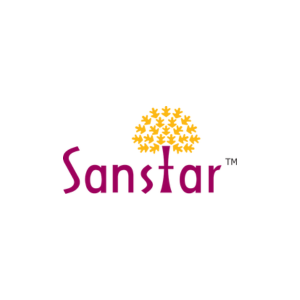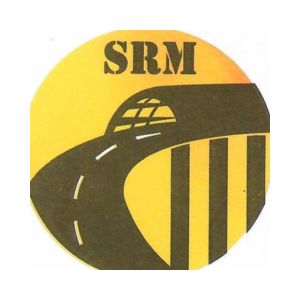
IPO Allotment Status
Checking your IPO allotment status is important because it shows you if your IPO application was successful and how many shares you received.... After you apply for an IPO, it usually takes 2-3 days for the allotment status to be updated once the IPO closes. Your IPO status check can happen through stock exchange websites like BSE and NSE, registrar websites or your demat account.(+)
- Issue Date 31 Dec - 2 Jan
- Allotment Date 05-Jan-26
- Price Range ₹ 90
- IPO Size ₹ 36.89 Cr
- Issue Date 26 Dec - 30 Dec
- Allotment Date 31-Dec-25
- Price Range ₹ 174
- IPO Size ₹ 84.22 Cr
- Issue Date 23 Dec - 26 Dec
- Allotment Date 29-Dec-25
- Price Range ₹ 126
- IPO Size ₹ 50.2 Cr
- Issue Date 23 Dec - 26 Dec
- Allotment Date 29-Dec-25
- Price Range ₹ 186
- IPO Size ₹ 105.17 Cr
- Issue Date 23 Dec - 26 Dec
- Allotment Date 29-Dec-25
- Price Range ₹ 239
- IPO Size ₹ 42.6 Cr
- Issue Date 23 Dec - 26 Dec
- Allotment Date 29-Dec-25
- Price Range ₹ 220
- IPO Size ₹ 31.81 Cr
- Issue Date 23 Dec - 26 Dec
- Allotment Date 29-Dec-25
- Price Range ₹ 130
- IPO Size ₹ 47.96 Cr

- Issue Date 22 Dec - 24 Dec
- Allotment Date 26-Dec-25
- Price Range ₹ 108 to ₹114
- IPO Size ₹ 250.80 Cr
- Issue Date 22 Dec - 24 Dec
- Allotment Date 26-Dec-25
- Price Range ₹ 70
- IPO Size ₹ 38.49 Cr
- Issue Date 22 Dec - 24 Dec
- Allotment Date 26-Dec-25
- Price Range ₹ 102
- IPO Size ₹ 40.39 Cr
- Issue Date 22 Dec - 24 Dec
- Allotment Date 26-Dec-25
- Price Range ₹ 86
- IPO Size ₹ 32.25 Cr
- Issue Date 22 Dec - 24 Dec
- Allotment Date 26-Dec-25
- Price Range ₹ 97
- IPO Size ₹ 31.81 Cr
- Issue Date 17 Dec - 19 Dec
- Allotment Date 22-Dec-25
- Price Range ₹ 93
- IPO Size ₹ 42.59 Cr
- Issue Date 17 Dec - 19 Dec
- Allotment Date 22-Dec-25
- Price Range ₹ 78
- IPO Size ₹ 30.41 Cr

- Issue Date 16 Dec - 18 Dec
- Allotment Date 19-Dec-25
- Price Range ₹ 365 to ₹384
- IPO Size ₹ 710.00 Cr
- Issue Date 15 Dec - 17 Dec
- Allotment Date 18-Dec-25
- Price Range ₹ 126
- IPO Size ₹ 46.62 Cr

- Issue Date 12 Dec - 16 Dec
- Allotment Date 17-Dec-25
- Price Range ₹ 2061 to ₹2165
- IPO Size ₹ 10,602.65 Cr
- Issue Date 12 Dec - 16 Dec
- Allotment Date 17-Dec-25
- Price Range ₹ 88
- IPO Size ₹ 43.73 Cr
- Issue Date 12 Dec - 16 Dec
- Allotment Date 17-Dec-25
- Price Range ₹ 142
- IPO Size ₹ 71 Cr
- Issue Date 12 Dec - 16 Dec
- Allotment Date 17-Dec-25
- Price Range ₹ 30
- IPO Size ₹ 12.28 Cr
- Issue Date 11 Dec - 15 Dec
- Allotment Date 16-Dec-25
- Price Range ₹ 96
- IPO Size ₹ 50.92 Cr
- Issue Date 11 Dec - 15 Dec
- Allotment Date 16-Dec-25
- Price Range ₹ 118
- IPO Size ₹ 74.45 Cr

- Issue Date 10 Dec - 12 Dec
- Allotment Date 15-Dec-25
- Price Range ₹ 154 to ₹162
- IPO Size ₹ 920 Cr

- Issue Date 10 Dec - 12 Dec
- Allotment Date 15-Dec-25
- Price Range ₹ 438 to ₹460
- IPO Size ₹ 871.05 Cr
- Issue Date 10 Dec - 12 Dec
- Allotment Date 15-Dec-25
- Price Range ₹ 65
- IPO Size ₹ 21.45 Cr
- Issue Date 10 Dec - 12 Dec
- Allotment Date 15-Dec-25
- Price Range ₹ 12
- IPO Size ₹ 56.35 Cr

- Issue Date 8 Dec - 10 Dec
- Allotment Date 11-Dec-25
- Price Range ₹ 1008 to ₹1062
- IPO Size ₹ 655.37 Cr

- Issue Date 8 Dec - 10 Dec
- Allotment Date 11-Dec-25
- Price Range ₹ 185 to ₹195
- IPO Size ₹ 1,288.89 Cr
- Issue Date 8 Dec - 10 Dec
- Allotment Date 11-Dec-25
- Price Range ₹ 138
- IPO Size ₹ 27.6 Cr
- Issue Date 8 Dec - 10 Dec
- Allotment Date 11-Dec-25
- Price Range ₹ 100
- IPO Size ₹ 24.68 Cr
- Issue Date 8 Dec - 10 Dec
- Allotment Date 11-Dec-25
- Price Range ₹ 239
- IPO Size ₹ 40.15 Cr
- Issue Date 5 Dec - 9 Dec
- Allotment Date 10-Dec-25
- Price Range ₹ 194
- IPO Size ₹ 102.49 Cr
- Issue Date 5 Dec - 9 Dec
- Allotment Date 10-Dec-25
- Price Range ₹ 107
- IPO Size ₹ 40.21 Cr
- Issue Date 5 Dec - 9 Dec
- Allotment Date 10-Dec-25
- Price Range ₹ 191
- IPO Size ₹ 57.05 Cr
- Issue Date 4 Dec - 8 Dec
- Allotment Date 09-Dec-25
- Price Range ₹ 56
- IPO Size ₹ 10.07 Cr
- Issue Date 4 Dec - 8 Dec
- Allotment Date 09-Dec-25
- Price Range ₹ 82
- IPO Size ₹ 18.74 Cr

- Issue Date 3 Dec - 5 Dec
- Allotment Date 08-Dec-25
- Price Range ₹ 105 to ₹111
- IPO Size ₹ 5421.20 Cr

- Issue Date 3 Dec - 5 Dec
- Allotment Date 08-Dec-25
- Price Range ₹ 118 to ₹124
- IPO Size ₹ 921.81 Cr

- Issue Date 3 Dec - 5 Dec
- Allotment Date 08-Dec-25
- Price Range ₹ 48 to ₹52
- IPO Size ₹ 300.01 Cr
- Issue Date 3 Dec - 5 Dec
- Allotment Date 08-Dec-25
- Price Range ₹ 90
- IPO Size ₹ 46.28 Cr
- Issue Date 2 Dec - 4 Dec
- Allotment Date 05-Dec-25
- Price Range ₹ 98
- IPO Size ₹ 44.97 Cr
- Issue Date 2 Dec - 4 Dec
- Allotment Date 05-Dec-25
- Price Range ₹ 118
- IPO Size ₹ 10.96 Cr
- Issue Date 1 Dec - 3 Dec
- Allotment Date 04-Dec-25
- Price Range ₹ 132
- IPO Size ₹ 85.6 Cr
- Issue Date 1 Dec - 3 Dec
- Allotment Date 04-Dec-25
- Price Range ₹ 56
- IPO Size ₹ 33.73 Cr

- Issue Date 21 Nov - 25 Nov
- Allotment Date 26-Nov-25
- Price Range ₹ 563 to ₹ 593
- IPO Size ₹ 895 Cr

- Issue Date 19 Nov - 21 Nov
- Allotment Date 24-Nov-25
- Price Range ₹ 114 to ₹120
- IPO Size ₹ 500 Cr

- Issue Date 14 Nov - 18 Nov
- Allotment Date 19-Nov-25
- Price Range ₹ 549 to ₹577
- IPO Size ₹ 877.50 Cr

- Issue Date 13 Nov - 17 Nov
- Allotment Date 18-Nov-25
- Price Range ₹ 216 to ₹228
- IPO Size ₹ 828.00 Cr

- Issue Date 12 Nov - 14 Nov
- Allotment Date 17-Nov-25
- Price Range ₹ 378 to ₹397
- IPO Size ₹ 3,600 Cr

- Issue Date 11 Nov - 13 Nov
- Allotment Date 14-Nov-25
- Price Range ₹ 103 to ₹109
- IPO Size ₹ 3480 Cr

- Issue Date 11 Nov - 13 Nov
- Allotment Date 14-Nov-25
- Price Range ₹ 206 to ₹217
- IPO Size ₹ 2,900 Cr

- Issue Date 7 Nov - 11 Nov
- Allotment Date 12-Nov-25
- Price Range ₹ 210 to ₹221
- IPO Size ₹ 3899.91 Cr

- Issue Date 4 Nov - 7 Nov
- Allotment Date 10-Nov-25
- Price Range ₹ 95 to ₹100
- IPO Size ₹ 6632.30 Cr

- Issue Date 31 Oct - 4 Nov
- Allotment Date 06-Nov-25
- Price Range ₹ 382 to ₹402
- IPO Size ₹ 7,278.02 Cr

- Issue Date 30 Oct - 3 Nov
- Allotment Date 04-Nov-25
- Price Range ₹ 557 to ₹ 585
- IPO Size ₹ 455.49 Cr

- Issue Date 29 Oct - 31 Oct
- Allotment Date 03-Nov-25
- Price Range ₹ 695 to ₹730
- IPO Size ₹ 1,667.54 Cr

- Issue Date 15 Oct - 17 Oct
- Allotment Date 20-Oct-25
- Price Range ₹ 1014 to ₹1065
- IPO Size ₹ 451 Cr

- Issue Date 10 Oct - 14 Oct
- Allotment Date 15-Oct-25
- Price Range ₹ 100 to ₹106
- IPO Size ₹ 2,517.50 Cr
- Issue Date 9 Oct - 13 Oct
- Allotment Date 14-Oct-25
- Price Range ₹ 461 to ₹485
- IPO Size ₹ 1,377.50 Cr

- Issue Date 9 Oct - 13 Oct
- Allotment Date 14-Oct-25
- Price Range ₹ 253 to ₹266
- IPO Size ₹ 1,326.13 Cr

- Issue Date 7 Oct - 9 Oct
- Allotment Date 14-Oct-25
- Price Range ₹ 98 to ₹100
- IPO Size ₹ 400.00 Cr

- Issue Date 7 Oct - 9 Oct
- Allotment Date 10-Oct-25
- Price Range ₹ 1080 to ₹1140
- IPO Size ₹ 11,607.01 Cr

- Issue Date 6 Oct - 8 Oct
- Allotment Date 09-Oct-25
- Price Range ₹ 310 - ₹326
- IPO Size ₹ 15511.87 Cr

- Issue Date 3 Oct - 7 Oct
- Allotment Date 08-Oct-25
- Price Range ₹ 615 - ₹648
- IPO Size ₹ 3000 Cr

- Issue Date 29 Sep - 3 Oct
- Allotment Date 06-Oct-25
- Price Range ₹ 128 to ₹135
- IPO Size ₹ 122.31 Cr

- Issue Date 30 Sep - 3 Oct
- Allotment Date 06-Oct-25
- Price Range ₹ 95 to ₹100
- IPO Size ₹ 192.86 Cr

- Issue Date 29 Sep - 1 Oct
- Allotment Date 03-Oct-25
- Price Range ₹ 181 to ₹191
- IPO Size ₹ 230.35 Cr

- Issue Date 29 Sep - 1 Oct
- Allotment Date 03-Oct-25
- Price Range ₹ 120 to ₹129
- IPO Size ₹ 307.00 Cr

- Issue Date 1 Dec - 3 Dec
- Allotment Date 04-Dec-25
- Price Range ₹ 130
- IPO Size ₹ 24.1 Cr
- Issue Date 1 Dec - 3 Dec
- Allotment Date 04-Dec-25
- Price Range ₹ 85
- IPO Size ₹ 28.12 Cr
- Issue Date 1 Dec - 3 Dec
- Allotment Date 04-Dec-25
- Price Range ₹ 63
- IPO Size ₹ 18.4 Cr
- Issue Date 28 Nov - 2 Dec
- Allotment Date 03-Dec-25
- Price Range ₹ 193
- IPO Size ₹ 39.9 Cr
- Issue Date 28 Nov - 2 Dec
- Allotment Date 03-Dec-25
- Price Range ₹ 126
- IPO Size ₹ 31.45 Cr
- Issue Date 28 Nov - 2 Dec
- Allotment Date 03-Dec-25
- Price Range ₹ 140
- IPO Size ₹ 37.45 Cr
- Issue Date 26 Nov - 28 Nov
- Allotment Date 01-Dec-25
- Price Range ₹ 117
- IPO Size ₹ 39.59 Cr
- Issue Date 26 Nov - 28 Nov
- Allotment Date 01-Dec-25
- Price Range ₹ 38
- IPO Size ₹ 28.5 Cr
- Issue Date 25 Nov - 27 Nov
- Allotment Date 28-Nov-25
- Price Range ₹ 121
- IPO Size ₹ 34.09 Cr
- Issue Date 19 Nov - 21 Nov
- Allotment Date 24-Nov-25
- Price Range ₹ 150
- IPO Size ₹ 37.5 Cr
- Issue Date 11 Nov - 13 Nov
- Allotment Date 14-Nov-25
- Price Range ₹ 114
- IPO Size ₹ 70.44 Cr
- Issue Date 11 Nov - 13 Nov
- Allotment Date 14-Nov-25
- Price Range ₹ 204
- IPO Size ₹ 69.84 Cr
- Issue Date 7 Nov - 11 Nov
- Allotment Date 12-Nov-25
- Price Range ₹ 114
- IPO Size ₹ 17.1 Cr
- Issue Date 7 Nov - 11 Nov
- Allotment Date 12-Nov-25
- Price Range ₹ 128
- IPO Size ₹ 27.52 Cr
- Issue Date 6 Nov - 10 Nov
- Allotment Date 11-Nov-25
- Price Range ₹ 142
- IPO Size ₹ 71.68 Cr
- Issue Date 4 Nov - 7 Nov
- Allotment Date 10-Nov-25
- Price Range ₹ 125
- IPO Size ₹ 85 Cr
- Issue Date 29 Oct - 31 Oct
- Allotment Date 31-Oct-25
- Price Range ₹ 102
- IPO Size ₹ 30.6 Cr
- Issue Date 28 Oct - 30 Oct
- Allotment Date 31-Oct-25
- Price Range ₹ 102
- IPO Size ₹ 54.84 Cr
- Issue Date 27 Oct - 29 Oct
- Allotment Date 30-Oct-25
- Price Range ₹ 122
- IPO Size ₹ 28.63 Cr
- Issue Date 10 Oct - 14 Oct
- Allotment Date 15-Oct-25
- Price Range ₹ 127
- IPO Size ₹ 41.15 Cr
- Issue Date 10 Oct - 14 Oct
- Allotment Date 15-Oct-25
- Price Range ₹ 66
- IPO Size ₹ 10.56 Cr
- Issue Date 30 Sep - 14 Oct
- Allotment Date 15-Oct-25
- Price Range ₹ 91
- IPO Size ₹ 57.79 Cr
- Issue Date 7 Oct - 9 Oct
- Allotment Date 10-Oct-25
- Price Range ₹ 143
- IPO Size ₹ 52.91 Cr
- Issue Date 30 Sep - 6 Oct
- Allotment Date 07-Oct-25
- Price Range ₹ 136
- IPO Size ₹ 21.9 Cr
- Issue Date 30 Sep - 3 Oct
- Allotment Date 06-Oct-25
- Price Range ₹ 54
- IPO Size ₹ 28.09 Cr
- Issue Date 30 Sep - 3 Oct
- Allotment Date 06-Oct-25
- Price Range ₹ 63
- IPO Size ₹ 34.02 Cr
- Issue Date 30 Sep - 3 Oct
- Allotment Date 06-Oct-25
- Price Range ₹ 136
- IPO Size ₹ 78.34 Cr
- Issue Date 30 Sep - 3 Oct
- Allotment Date 06-Oct-25
- Price Range ₹ 155
- IPO Size ₹ 24.42 Cr
- Issue Date 30 Sep - 3 Oct
- Allotment Date 06-Oct-25
- Price Range ₹ 96
- IPO Size ₹ 73.92 Cr
- Issue Date 30 Sep - 3 Oct
- Allotment Date 06-Oct-25
- Price Range ₹ 46
- IPO Size ₹ 16.84 Cr
- Issue Date 30 Sep - 3 Oct
- Allotment Date 06-Oct-25
- Price Range ₹ 87
- IPO Size ₹ 48.72 Cr
- Issue Date 29 Sep - 3 Oct
- Allotment Date 06-Oct-25
- Price Range ₹ 21
- IPO Size ₹ 31.07 Cr
- Issue Date 29 Sep - 1 Oct
- Allotment Date 03-Oct-25
- Price Range ₹ 35
- IPO Size ₹ 19.25 Cr
- Issue Date 29 Sep - 1 Oct
- Allotment Date 03-Oct-25
- Price Range ₹ 72
- IPO Size ₹ 10.08 Cr
- Issue Date 29 Sep - 1 Oct
- Allotment Date 03-Oct-25
- Price Range ₹ 51
- IPO Size ₹ 10.71 Cr

- Issue Date 26 Sep - 30 Sep
- Allotment Date 01-Oct-25
- Price Range ₹ 208 to ₹219
- IPO Size ₹ 819.15 Cr

- Issue Date 25 Sep - 29 Sep
- Allotment Date 30-Sep-25
- Price Range ₹ 115 to ₹121
- IPO Size ₹ 116.11 Cr

- Issue Date 25 Sep - 29 Sep
- Allotment Date 30-Sep-25
- Price Range ₹ 472 to ₹496
- IPO Size ₹ 839.28 Cr

- Issue Date 24 Sep - 26 Sep
- Allotment Date 29-Sep-25
- Price Range ₹ 194 to ₹204
- IPO Size ₹ 504.00 Cr

- Issue Date 24 Sep - 26 Sep
- Allotment Date 29-Sep-25
- Price Range ₹ 94 to ₹99
- IPO Size ₹ 231.66 Cr

- Issue Date 24 Sep - 26 Sep
- Allotment Date 29-Sep-25
- Price Range ₹ 220 to ₹232
- IPO Size ₹ 1,250.00 Cr

- Issue Date 23 Sep - 25 Sep
- Allotment Date 26-Sep-25
- Price Range ₹ 402 to ₹423
- IPO Size ₹ 813.07 Cr

- Issue Date 23 Sep - 25 Sep
- Allotment Date 26-Sep-25
- Price Range ₹ 846 to ₹890
- IPO Size ₹ 450 Cr

- Issue Date 23 Sep - 25 Sep
- Allotment Date 26-Sep-25
- Price Range ₹ 393 to ₹414
- IPO Size ₹ 745 Cr

- Issue Date 23 Sep - 25 Sep
- Allotment Date 26-Sep-25
- Price Range ₹ 333 to ₹351
- IPO Size ₹ 490.00 Cr

- Issue Date 22 Sep - 24 Sep
- Allotment Date 25-Sep-25
- Price Range ₹ 306 to ₹322
- IPO Size ₹ 408.80 Cr

- Issue Date 22 Sep - 24 Sep
- Allotment Date 25-Sep-25
- Price Range ₹ 718 to ₹754
- IPO Size ₹ 687.34 Cr

- Issue Date 19 Sep - 23 Sep
- Allotment Date 24-Sep-25
- Price Range ₹ 442 to ₹465
- IPO Size ₹ 900 Cr

- Issue Date 19 Sep - 23 Sep
- Allotment Date 24-Sep-25
- Price Range ₹ 145 to ₹153
- IPO Size ₹ 464.26 Cr

- Issue Date 18 Sep - 22 Sep
- Allotment Date 23-Sep-25
- Price Range ₹ 284 to ₹299
- IPO Size ₹ 560.29 Cr

- Issue Date 17 Sep - 19 Sep
- Allotment Date 22-Sep-25
- Price Range ₹ 94 to ₹99
- IPO Size ₹ 148.50 Cr

- Issue Date 16 Sep - 18 Sep
- Allotment Date 19-Sep-25
- Price Range ₹ 235 to ₹247
- IPO Size ₹ 451.31 Cr

- Issue Date 10 Sep - 12 Sep
- Allotment Date 15-Sep-25
- Price Range ₹ 155 to ₹165
- IPO Size ₹ 400.95 Cr

- Issue Date 10 Sep - 12 Sep
- Allotment Date 15-Sep-25
- Price Range ₹ 56 to ₹61
- IPO Size ₹ 143.35 Cr

- Issue Date 10 Sep - 12 Sep
- Allotment Date 15-Sep-25
- Price Range ₹ 98 to ₹103
- IPO Size ₹ 1,900 Cr

- Issue Date 1 Sep - 3 Sep
- Allotment Date 04-Sep-25
- Price Range ₹ 120 to ₹126
- IPO Size ₹ 126 Cr

- Issue Date 26 Aug - 29 Aug
- Allotment Date 01-Sep-25
- Price Range ₹ 92 to ₹97
- IPO Size ₹ 772.00 Cr

- Issue Date 26 Aug - 29 Aug
- Allotment Date 01-Sep-25
- Price Range ₹ 86 to ₹91
- IPO Size ₹ 121.03 Cr

- Issue Date 20 Aug - 22 Aug
- Allotment Date 25-Aug-25
- Price Range ₹ 533 to ₹561
- IPO Size ₹ 400 Cr

- Issue Date 19 Aug - 21 Aug
- Allotment Date 22-Aug-25
- Price Range ₹ 237 to ₹255
- IPO Size ₹ 241.46 Cr

- Issue Date 19 Aug - 21 Aug
- Allotment Date 22-Aug-25
- Price Range ₹ 315 to ₹332
- IPO Size ₹ 2,079.37 Cr

- Issue Date 19 Aug - 21 Aug
- Allotment Date 22-Aug-25
- Price Range ₹ 240 to ₹252
- IPO Size ₹ 410.71 Cr

- Issue Date 19 Aug - 21 Aug
- Allotment Date 22-Aug-25
- Price Range ₹ 309 to ₹325
- IPO Size ₹ 451.25 Cr

- Issue Date 12 Aug - 14 Aug
- Allotment Date 18-Aug-25
- Price Range ₹ 96 to ₹102
- IPO Size ₹ 306.00 Cr

- Issue Date 11 Aug - 13 Aug
- Allotment Date 14-Aug-25
- Price Range ₹ 492 to ₹517
- IPO Size ₹ 1540.65 Cr

- Issue Date 7 Aug - 11 Aug
- Allotment Date 12-Aug-25
- Price Range ₹ 260 – ₹275
- IPO Size ₹ 400.60 Cr

- Issue Date 7 Aug - 11 Aug
- Allotment Date 12-Aug-25
- Price Range ₹ 139 – ₹147
- IPO Size ₹ 3600 Cr

- Issue Date 5 Aug - 7 Aug
- Allotment Date 08-Aug-25
- Price Range ₹ 65 to ₹70
- IPO Size ₹ 130 Cr

- Issue Date 5 Aug - 7 Aug
- Allotment Date 08-Aug-25
- Price Range ₹ 95 to ₹100
- IPO Size ₹ 4,800 Cr

- Issue Date 30 Jul - 1 Aug
- Allotment Date 04-Aug-25
- Price Range ₹ 140 to ₹150
- IPO Size ₹ 792 Cr

- Issue Date 30 Jul - 1 Aug
- Allotment Date 04-Aug-25
- Price Range ₹ 760 to ₹800
- IPO Size ₹ 4,011.60 Cr

- Issue Date 30 Jul - 1 Aug
- Allotment Date 04-Aug-25
- Price Range ₹ 366 to ₹385
- IPO Size ₹ 650 Cr

- Issue Date 29 Jul - 31 Jul
- Allotment Date 01-Aug-25
- Price Range ₹ 150 to ₹158
- IPO Size ₹ 254.26 Cr

- Issue Date 29 Jul - 31 Jul
- Allotment Date 01-Aug-25
- Price Range ₹ 640 to ₹675
- IPO Size ₹ 1,300 Cr

- Issue Date 25 Jul - 29 Jul
- Allotment Date 30-Jul-25
- Price Range ₹ 189 to ₹199
- IPO Size ₹ 360.11 Cr

- Issue Date 24 Jul - 28 Jul
- Allotment Date 29-Jul-25
- Price Range ₹ 85 to ₹90
- IPO Size ₹ 759.60 Cr

- Issue Date 23 Jul - 25 Jul
- Allotment Date 28-Jul-25
- Price Range ₹ 225 to ₹237
- IPO Size ₹ 700 Cr

- Issue Date 23 Jul - 25 Jul
- Allotment Date 28-Jul-25
- Price Range ₹ 225 to ₹237
- IPO Size ₹ 460.43 Cr

- Issue Date 14 Jul - 16 Jul
- Allotment Date 17-Jul-25
- Price Range ₹ 540 to ₹570
- IPO Size ₹ 3,395 Cr

- Issue Date 10 Jul - 14 Jul
- Allotment Date 15-Jul-25
- Price Range ₹ 387 to ₹407
- IPO Size ₹ 582.56 Cr

- Issue Date 7 Jul - 9 Jul
- Allotment Date 10-Jul-25
- Price Range ₹ 1045 to ₹1100
- IPO Size ₹ 2000 Cr

- Issue Date 2 Jul - 4 Jul
- Allotment Date 07-Jul-25
- Price Range ₹ 233 to ₹245
- IPO Size ₹ 860 Cr

- Issue Date 26 Jun - 30 Jun
- Allotment Date 01-Jul-25
- Price Range ₹ 105 to ₹111
- IPO Size ₹ 200 Cr

- Issue Date 25 Jun - 27 Jun
- Allotment Date 30-Jun-25
- Price Range ₹ 700 to ₹740
- IPO Size ₹ 12,500 Cr

- Issue Date 25 Jun - 27 Jun
- Allotment Date 30-Jun-25
- Price Range ₹ 77 to ₹82
- IPO Size ₹ 540 Cr

- Issue Date 24 Jun - 26 Jun
- Allotment Date 27-Jun-25
- Price Range ₹ 67 to ₹71
- IPO Size ₹ 119 Cr

- Issue Date 24 Jun - 26 Jun
- Allotment Date 27-Jun-25
- Price Range ₹ 380 to ₹400
- IPO Size ₹ 852.53 Cr

- Issue Date 24 Jun - 26 Jun
- Allotment Date 27-Jun-25
- Price Range ₹ 387 to ₹414
- IPO Size ₹ 1590 Cr

- Issue Date 18 Jun - 20 Jun
- Allotment Date 23-Jun-25
- Price Range ₹ 210 to ₹222
- IPO Size ₹ 499.60 Cr

- Issue Date 13 Jun - 17 Jun
- Allotment Date 18-Jun-25
- Price Range ₹ 584 to ₹614
- IPO Size ₹ 1387.34 Cr

- Issue Date 28 May - 30 May
- Allotment Date 02-Jun-25
- Price Range ₹ 130 to ₹140
- IPO Size ₹ 220 Cr

- Issue Date 27 May - 29 May
- Allotment Date 30-May-25
- Price Range ₹ 95 to ₹105
- IPO Size ₹ 168 Cr

- Issue Date 26 May - 28 May
- Allotment Date 29-May-25
- Price Range ₹ 223 to ₹235
- IPO Size ₹ 2800 Cr

- Issue Date 26 May - 28 May
- Allotment Date 29-May-25
- Price Range ₹ 413 to ₹435
- IPO Size ₹ 3,500 Cr

- Issue Date 21 May - 23 May
- Allotment Date 26-May-25
- Price Range ₹ 85 to ₹ 90
- IPO Size ₹ 2150 Cr

- Issue Date 20 May - 22 May
- Allotment Date 23-May-25
- Price Range ₹ 205 to ₹216
- IPO Size ₹ 144.89 Cr

- Issue Date 28 Apr - 30 Apr
- Allotment Date 02-May-25
- Price Range ₹ 304 to ₹ 321
- IPO Size ₹ 2980.76 Cr

- Issue Date 14 Feb - 18 Feb
- Allotment Date 19-Feb-25
- Price Range ₹ 401 to ₹ 425
- IPO Size ₹ 858.70 Cr

- Issue Date 12 Feb - 14 Feb
- Allotment Date 17-Feb-25
- Price Range ₹ 674 to ₹ 708
- IPO Size ₹ 8750.00 Cr

- Issue Date 10 Feb - 12 Feb
- Allotment Date 13-Feb-25
- Price Range ₹ 599 to ₹629
- IPO Size ₹ 1269.35 Cr

- Issue Date 29 Jan - 31 Jan
- Allotment Date 03-Feb-25
- Price Range ₹ 382 to ₹ 402
- IPO Size ₹ 3027.26 Cr

- Issue Date 22 Jan - 24 Jan
- Allotment Date 27-Jan-25
- Price Range ₹ 279 to ₹ 294
- IPO Size ₹ 220.50 Cr

- Issue Date 16 Jan - 20 Jan
- Allotment Date 21-Jan-25
- Price Range ₹ 85 to ₹ 90
- IPO Size ₹ 199.45 Cr

- Issue Date 13 Jan - 15 Jan
- Allotment Date 16-Jan-25
- Price Range ₹ 407 to ₹ 428
- IPO Size ₹ 698.06 Cr

- Issue Date 7 Jan - 9 Jan
- Allotment Date 10-Jan-25
- Price Range ₹ 99 to ₹ 100
- IPO Size ₹ 1578.00 Cr

- Issue Date 7 Jan - 9 Jan
- Allotment Date 10-Jan-25
- Price Range ₹ 275 to ₹ 290
- IPO Size ₹ 290.00 Cr

- Issue Date 6 Jan - 8 Jan
- Allotment Date 09-Jan-25
- Price Range ₹ 133 to ₹ 140
- IPO Size ₹ 410.05 Cr

- Issue Date 31 Dec - 2 Jan
- Allotment Date 03-Jan-25
- Price Range ₹ 204 to ₹ 215
- IPO Size ₹ 260.15 Cr

- Issue Date 23 Dec - 26 Dec
- Allotment Date 27-Dec-24
- Price Range ₹ 745 to ₹ 785
- IPO Size ₹ 500.00 Cr

- Issue Date 20 Dec - 24 Dec
- Allotment Date 26-Dec-24
- Price Range ₹ 372 to ₹ 391
- IPO Size ₹ 582.11 Cr

- Issue Date 20 Dec - 24 Dec
- Allotment Date 26-Dec-24
- Price Range ₹ 610 to ₹ 643
- IPO Size ₹ 1600.00 Cr

- Issue Date 20 Dec - 24 Dec
- Allotment Date 26-Dec-24
- Price Range ₹ 668 to ₹ 704
- IPO Size ₹ 1250.00 Cr

- Issue Date 19 Dec - 23 Dec
- Allotment Date 24-Dec-24
- Price Range ₹ 269 - ₹ 283
- IPO Size ₹ 840.25 Cr

- Issue Date 19 Dec - 23 Dec
- Allotment Date 24-Dec-24
- Price Range ₹ 230 - ₹ 243
- IPO Size ₹ 179.39 Cr

- Issue Date 19 Dec - 23 Dec
- Allotment Date 24-Dec-24
- Price Range ₹ 665 - ₹ 701
- IPO Size ₹ 500.33 Cr

- Issue Date 19 Dec - 23 Dec
- Allotment Date 24-Dec-24
- Price Range ₹ 305 - ₹ 321
- IPO Size ₹ 550.00 Cr

- Issue Date 19 Dec - 23 Dec
- Allotment Date 24-Dec-24
- Price Range ₹ 410 - ₹ 432
- IPO Size ₹ 838.91 Cr

- Issue Date 13 Dec - 17 Dec
- Allotment Date 18-Dec-24
- Price Range ₹ 397 - ₹ 417
- IPO Size ₹ 4225.00 Cr

- Issue Date 12 Dec - 16 Dec
- Allotment Date 17-Dec-24
- Price Range ₹ 1265 - ₹ 1329
- IPO Size ₹ 2497.92 Cr

- Issue Date 11 Dec - 13 Dec
- Allotment Date 16-Dec-24
- Price Range ₹ 265 - ₹ 279
- IPO Size ₹ 572.00 Cr

- Issue Date 11 Dec - 13 Dec
- Allotment Date 16-Dec-24
- Price Range ₹ 522 - ₹ 549
- IPO Size ₹ 3042.62 Cr

- Issue Date 11 Dec - 13 Dec
- Allotment Date 16-Dec-24
- Price Range ₹ 74 - ₹ 78
- IPO Size ₹ 8000 Cr

- Issue Date 29 Nov - 3 Dec
- Allotment Date 04-Dec-24
- Price Range ₹ 420 to ₹ 441
- IPO Size ₹ 846.25 Cr

- Issue Date 22 Nov - 26 Nov
- Allotment Date 27-Nov-24
- Price Range ₹ 140 - ₹ 148
- IPO Size ₹ 650.43 Cr

- Issue Date 19 Nov - 22 Nov
- Allotment Date 25-Nov-24
- Price Range ₹ 102 - ₹ 108
- IPO Size ₹ 10000 Cr

- Issue Date 13 Nov - 18 Nov
- Allotment Date 19-Nov-24
- Price Range ₹ 259 - ₹ 273
- IPO Size ₹ 1114.72 Cr

- Issue Date 7 Nov - 11 Nov
- Allotment Date 12-Nov-24
- Price Range ₹ 70 to ₹ 74
- IPO Size ₹ 2200 Cr

- Issue Date 6 Nov - 8 Nov
- Allotment Date 11-Nov-24
- Price Range ₹ 371 - ₹ 390
- IPO Size ₹ 11327.43 Cr

- Issue Date 6 Nov - 8 Nov
- Allotment Date 11-Nov-24
- Price Range ₹ 275 to ₹ 289
- IPO Size ₹ 3000 Cr

- Issue Date 5 Nov - 7 Nov
- Allotment Date 08-Nov-24
- Price Range ₹ 28 to ₹ 30
- IPO Size ₹ 2106.60 Cr

- Issue Date 25 Oct - 29 Oct
- Allotment Date 30-Oct-24
- Price Range ₹ 440 to ₹ 463
- IPO Size ₹ 5430.00 Cr

- Issue Date 23 Oct - 25 Oct
- Allotment Date 28-Oct-24
- Price Range ₹ 334 to ₹ 352
- IPO Size ₹ 554.75 Cr

- Issue Date 21 Oct - 23 Oct
- Allotment Date 24-Oct-24
- Price Range ₹ 1427 - ₹ 1503
- IPO Size ₹ 4321.44 Cr

- Issue Date 21 Oct - 23 Oct
- Allotment Date 24-Oct-24
- Price Range ₹ 192 - ₹203
- IPO Size ₹ 260.04 Cr

- Issue Date 15 Oct - 17 Oct
- Allotment Date 18-Oct-24
- Price Range ₹ 1865 to ₹ 1960
- IPO Size ₹ 27870.16 Cr

- Issue Date 8 Oct - 10 Oct
- Allotment Date 11-Oct-24
- Price Range ₹ 92 to ₹ 95
- IPO Size ₹ 264.10 Cr

- Issue Date 26 Sep - 30 Sep
- Allotment Date 01-Oct-24
- Price Range ₹ 159 to ₹ 168
- IPO Size ₹ 158 Cr

- Issue Date 25 Sep - 27 Sep
- Allotment Date 30-Sep-24
- Price Range ₹ 209 to ₹ 220
- IPO Size ₹ 341.95 Cr

- Issue Date 23 Sep - 25 Sep
- Allotment Date 26-Sep-24
- Price Range ₹ 114 to ₹120
- IPO Size ₹ 150.84 Cr

- Issue Date 16 Sep - 19 Sep
- Allotment Date 20-Sep-24
- Price Range ₹ 121 to ₹ 128
- IPO Size ₹ 410.00 Cr

- Issue Date 13 Sep - 19 Sep
- Allotment Date 20-Sep-24
- Price Range ₹ 163 to ₹ 172
- IPO Size ₹ 492.88 Cr

- Issue Date 16 Sep - 19 Sep
- Allotment Date 20-Sep-24
- Price Range ₹ 249 to ₹ 263
- IPO Size ₹ 777.00 Cr

- Issue Date 10 Sep - 12 Sep
- Allotment Date 13-Sep-24
- Price Range ₹ 456 to ₹ 480
- IPO Size ₹ 1,100.00 Cr

- Issue Date 9 Sep - 11 Sep
- Allotment Date 12-Sep-24
- Price Range ₹ 228 to ₹ 240
- IPO Size ₹ 500.00 Cr

- Issue Date 9 Sep - 11 Sep
- Allotment Date 12-Sep-24
- Price Range ₹ 215 to ₹ 226
- IPO Size ₹ 230.00 Cr

- Issue Date 9 Sep - 11 Sep
- Allotment Date 12-Sep-24
- Price Range ₹ 66 to ₹ 70
- IPO Size ₹ 6,560.00 Cr

- Issue Date 5 Sep - 9 Sep
- Allotment Date 10-Sep-24
- Price Range ₹ 78 to ₹83
- IPO Size ₹ 169.65 Cr

- Issue Date 2 Sep - 4 Sep
- Allotment Date 05-Sep-24
- Price Range ₹ 503 to ₹ 529
- IPO Size ₹ 167.93 Cr

- Issue Date 30 Aug - 3 Sep
- Allotment Date 04-Sep-24
- Price Range ₹ 370 to ₹ 389
- IPO Size ₹ 834.68 Cr

- Issue Date 28 Aug - 30 Aug
- Allotment Date 02-Sep-24
- Price Range ₹ 318 to ₹ 334
- IPO Size ₹ 601.20 Cr

- Issue Date 27 Aug - 29 Aug
- Allotment Date 30-Aug-24
- Price Range ₹ 427 to ₹ 450
- IPO Size ₹ 2,830.40 Cr

- Issue Date 21 Aug - 23 Aug
- Allotment Date 26-Aug-24
- Price Range ₹ 195 to ₹ 206
- IPO Size ₹ 214.76 Cr

- Issue Date 19 Aug - 21 Aug
- Allotment Date 22-Aug-24
- Price Range ₹ 850 to ₹ 900
- IPO Size ₹ 600.29 Cr

- Issue Date 12 Aug - 14 Aug
- Allotment Date 16-Aug-24
- Price Range ₹ 152 to ₹ 160
- IPO Size ₹ 160.01 Cr

- Issue Date 6 Aug - 8 Aug
- Allotment Date 09-Aug-24
- Price Range ₹ 102 to ₹108
- IPO Size ₹ 276.57 Cr

- Issue Date 6 Aug - 8 Aug
- Allotment Date 09-Aug-24
- Price Range ₹ 440 to ₹ 465
- IPO Size ₹ 4,193.73 Cr

- Issue Date 2 Aug - 6 Aug
- Allotment Date 07-Aug-24
- Price Range ₹ 72 to ₹ 76
- IPO Size ₹ 6145.56 Cr

- Issue Date 1 Aug - 5 Aug
- Allotment Date 06-Aug-24
- Price Range ₹ 380 to ₹401
- IPO Size ₹ 1,252.66 Cr

- Issue Date 30 Jul - 1 Aug
- Allotment Date 02-Aug-24
- Price Range ₹ 646 to ₹ 679
- IPO Size ₹ 1856.74 Cr

- Issue Date 19 Jul - 23 Jul
- Allotment Date 24-Jul-24
- Price Range ₹ 90 to ₹ 95
- IPO Size ₹ 510.15 Cr

- Issue Date 3 Jul - 5 Jul
- Allotment Date 08-Jul-24
- Price Range ₹ 243 to ₹256
- IPO Size ₹ 745 Cr

- Issue Date 3 Jul - 5 Jul
- Allotment Date 08-Jul-24
- Price Range ₹ 960 to ₹ 1008
- IPO Size ₹ 1,952.03 Cr

- Issue Date 26 Jun - 28 Jun
- Allotment Date 01-Jul-24
- Price Range ₹ 195 to ₹ 207
- IPO Size ₹ 171 Cr

- Issue Date 25 Jun - 27 Jun
- Allotment Date 28-Jun-24
- Price Range ₹ 267 to ₹ 281
- IPO Size ₹ 1500 Cr

- Issue Date 21 Jun - 25 Jun
- Allotment Date 26-Jun-24
- Price Range ₹ 351 to ₹369
- IPO Size ₹ 537.02 Cr

- Issue Date 19 Jun - 21 Jun
- Allotment Date 24-Jun-24
- Price Range ₹ 193 to ₹ 203
- IPO Size ₹ 418.01 Cr

- Issue Date 19 Jun - 21 Jun
- Allotment Date 24-Jun-24
- Price Range ₹ 114 to ₹ 120
- IPO Size ₹ 132 Cr

- Issue Date 10 Jun - 12 Jun
- Allotment Date 13-Jun-24
- Price Range ₹ 88 to ₹ 93
- IPO Size ₹ 740.10 Cr

- Issue Date 3 Jun - 5 Jun
- Allotment Date 06-Jun-24
- Price Range ₹ 129 to ₹ 136
- IPO Size ₹ 130.15 Cr

- Issue Date 22 May - 27 May
- Allotment Date 28-May-24
- Price Range ₹ 364 to ₹ 383
- IPO Size ₹ 598.93 Cr

- Issue Date 15 May - 17 May
- Allotment Date 21-May-24
- Price Range ₹ 258 to ₹ 272
- IPO Size ₹ 2,614.65 Cr

- Issue Date 8 May - 10 May
- Allotment Date 13-May-24
- Price Range ₹ 875 to ₹ 920
- IPO Size ₹ 1,550.81 Cr

- Issue Date 8 May - 10 May
- Allotment Date 13-May-24
- Price Range ₹ 300 to ₹ 315
- IPO Size ₹ 3,000 Cr

- Issue Date 6 May - 8 May
- Allotment Date 09-May-24
- Price Range ₹ 430 to ₹ 452
- IPO Size ₹ 1841.76 Cr

- Issue Date 23 Apr - 25 Apr
- Allotment Date 26-Apr-24
- Price Range ₹ 395 to ₹ 415
- IPO Size ₹ 649.47 Cr

- Issue Date 18 Apr - 22 Apr
- Allotment Date 23-Apr-24
- Price Range ₹ 10 to ₹ 11
- IPO Size ₹ 18000 Cr

- Issue Date 3 Apr - 5 Apr
- Allotment Date 08-Apr-24
- Price Range ₹ 542 to ₹570
- IPO Size ₹ 4,275 Cr

- Issue Date 26 Mar - 28 Mar
- Allotment Date 01-Apr-24
- Price Range ₹ 200 to ₹ 210
- IPO Size ₹ 130.20 Cr

- Issue Date 14 Mar - 18 Mar
- Allotment Date 19-Mar-24
- Price Range ₹ 680 to ₹ 715
- IPO Size ₹ 300.13 Cr

- Issue Date 12 Mar - 14 Mar
- Allotment Date 15-Mar-24
- Price Range ₹ 280 to ₹ 295
- IPO Size ₹ 601.55 Cr

- Issue Date 6 Mar - 11 Mar
- Allotment Date 12-Mar-24
- Price Range ₹ 381 to ₹ 401
- IPO Size ₹ 650 Cr

- Issue Date 5 Mar - 7 Mar
- Allotment Date 11-Mar-24
- Price Range ₹ 210 to ₹ 221
- IPO Size ₹ 251.19 Cr

- Issue Date 4 Mar - 6 Mar
- Allotment Date 07-Mar-24
- Price Range ₹ 270 to ₹ 288
- IPO Size ₹ 423.56 Cr

- Issue Date 29 Feb - 4 Mar
- Allotment Date 05-Mar-24
- Price Range ₹ 26 to ₹ 28
- IPO Size ₹ 224 Cr

- Issue Date 28 Feb - 1 Mar
- Allotment Date 04-Mar-24
- Price Range ₹ 98 to ₹ 100
- IPO Size ₹ 2500 Cr

- Issue Date 27 Feb - 29 Feb
- Allotment Date 01-Mar-24
- Price Range ₹ 162 to ₹ 171
- IPO Size ₹ 235.32 Cr

- Issue Date 27 Feb - 29 Feb
- Allotment Date 01-Mar-24
- Price Range ₹ 135 to ₹ 142
- IPO Size ₹ 429 Cr

- Issue Date 22 Feb - 26 Feb
- Allotment Date 27-Feb-24
- Price Range ₹ 177 to ₹ 186
- IPO Size ₹ 525.14 Cr

- Issue Date 21 Feb - 23 Feb
- Allotment Date 26-Feb-24
- Price Range ₹ 342 to ₹ 360
- IPO Size ₹ 1800 Cr

- Issue Date 13 Feb - 15 Feb
- Allotment Date 16-Feb-24
- Price Range ₹ 141 to ₹ 151
- IPO Size ₹ 72.17 Cr

- Issue Date 9 Feb - 13 Feb
- Allotment Date 14-Feb-24
- Price Range ₹ 1195 to ₹ 1258
- IPO Size ₹ 1,600 Cr

- Issue Date 7 Feb - 9 Feb
- Allotment Date 12-Feb-24
- Price Range ₹ 445 to ₹ 468
- IPO Size ₹ 523 Cr

- Issue Date 7 Feb - 9 Feb
- Allotment Date 12-Feb-24
- Price Range ₹ 295 to ₹ 311
- IPO Size ₹ 600 Cr

- Issue Date 7 Feb - 9 Feb
- Allotment Date 12-Feb-24
- Price Range ₹ 393 to ₹ 414
- IPO Size ₹ 570 Cr

- Issue Date 5 Feb - 7 Feb
- Allotment Date 08-Feb-24
- Price Range ₹ 147 to ₹ 155
- IPO Size ₹ 920 Cr

- Issue Date 30 Jan - 1 Feb
- Allotment Date 02-Feb-24
- Price Range ₹ 129 to ₹ 135
- IPO Size ₹ 325.76 Cr

- Issue Date 23 Jan - 25 Jan
- Allotment Date 29-Jan-24
- Price Range ₹ 39 to ₹ 41
- IPO Size ₹ 143.81 Cr

- Issue Date 19 Jan - 24 Jan
- Allotment Date 25-Jan-24
- Price Range ₹ 218 to ₹ 230
- IPO Size ₹ 640.05 Cr

- Issue Date 15 Jan - 17 Jan
- Allotment Date 18-Jan-24
- Price Range ₹ 397 to ₹ 418
- IPO Size ₹ 1171.58 Cr

- Issue Date 9 Jan - 11 Jan
- Allotment Date 12-Jan-24
- Price Range ₹ 315 to ₹ 331
- IPO Size ₹ 1,000 Cr
IPO allotment is a process where companies decide how many shares each investor gets after an IPO closes. When you apply for an IPO, you're not guaranteed to get shares. The company looks at all applications and divides the available shares among investors based on certain rules.
When an IPO gets more applications than available shares, the company uses a system to allocate shares fairly. The IPO allotment status shows whether your application was accepted and tells you exactly how many shares you received.
This information helps you plan your next steps, like preparing for the stock's listing day or making future investment decisions. When an IPO is heavily oversubscribed, companies often use a lottery system or give shares proportionally to ensure everyone gets a fair chance.
IPO Allotment Status Check Using the NSE & BSE Websites
For BSE IPO Allotment:
- Go to the BSE website and click on “Application Status Check”
- Choose "Equity" and select your IPO company from the list
- Enter your application number or PAN number
- Click submit to see your allotment details
For NSE IPO Allotment:
- Visit the NSE website and access “Resources and Tools”
- Select your IPO from the available options
- Enter your application details or PAN number
- Submit to view your IPO Allotment Status
Via Registrar Websites:
IPO registrar companies handle the allotment process for different IPOs:
- Visit registrar websites like Link Intime or KFintech
- Find the "IPO Allotment Status" section
- Choose your specific IPO from the dropdown list
- Enter your application number or PAN details
- Click check to see your share allocation
Check Through Your Demat Account
- Log in to your demat account
- Go to the IPO section in your account dashboard
- Look for "IPO Applications" or "IPO Status"
- Find your recent IPO application
- Check the status column to see your allotment details
| Registrar Name | What Do They Do? | Website Link |
|---|---|---|
| Link Intime India Private Limited | Handle IPO applications and share transfers for major companies | www.linkintime.co.in |
| KFin Technologies Limited | Process IPO allotments and maintain shareholder records | kosmic.kfintech.com |
| Bigshare Services Private Limited | Manage IPO registrations and share allotment services | www.bigshareonline.com |
| Cameo Corporate Services Limited | Provide registrar and share transfer services for IPOs | online.cameoindia.com |
| Skyline Financial Services Private Limited | Handle IPO processes and corporate registry services | www.skylinerta.com |
| Purva Sharegistry India Private Limited | Manage IPO allotments and maintain share registries | www.purvashare.com |
| Maashitla Securities Private Limited | Offer complete financial registry and IPO services | www.maashitla.com |
| Alankit Assignments Limited | Process share transfers and IPO-related documentation | www.alankit.com |
IPO registrars handle the IPO allotment calculation process and publish the results on their websites within 3 working days after the IPO closes.
The IPO allotment calculation follows a systematic approach that prioritises fairness and follows SEBI regulations. When an IPO receives more applications than available shares, the registrar first ensures every eligible applicant gets at least one lot before distributing additional shares.
The calculation process starts by dividing all applications into different categories, such as retail investors, high-net-worth individuals and institutional investors. Each category has a reserved quota of shares, which means retail investors compete only with other retail investors, not with big institutions.
For retail investors, the IPO allotment rules state that if oversubscription is mild, everyone gets a minimum allocation first, then the remaining shares are distributed proportionally. However, when oversubscription is heavy, the registrar conducts a computerised draw where luck determines who receives shares.
The IPO allotment process also considers the bid price that investors submitted. Those who bid at higher prices get priority over those who bid at lower prices. If you bid below the final issue price, you won't receive any shares, regardless of the lottery outcome.
Institutional investors follow different IPO allotment rules where shares are distributed proportionally based on their bid size and price. Institutional investors don't use lottery systems like regular investors do. Instead, they get shares based on how much they bid and how the company values long-term investors.
The entire IPO allotment calculation is documented in a report called "Basis of Allotment" that the registrar publishes after completing the process. This document shows exactly how many people applied, how oversubscribed each category was and what percentage of applicants received shares.
When you invest in an IPO, you don't buy individual shares. Instead, you buy them in bundles called "lots." This system makes the IPO allotment process more organised and easier to manage for both companies and investors.
Overview - Basic IPO Terms You Should Know
Before understanding the IPO allotment process, you need to understand these important terms that determine how shares get distributed.
- Minimum Application: This is the smallest amount of money you can invest in any IPO, usually around ₹15,000. You cannot invest less than this amount, but you can invest more by buying multiple lots.
- Minimum Subscription: This rule protects both companies and investors by setting a minimum number of shares that must be sold for the IPO to succeed. Companies usually set this at 90% of all shares they want to sell.
- Oversubscription: This happens when more people want to buy shares than the company has available. For instance, if an IPO allotment company offers 1,000 lots but receives applications for 2,000 lots, the IPO is oversubscribed by two times.
Example Explanations
Total Number of Bids for Lots < Total Number of Lots Offered
Imagine Company ABC offers 10,000 lots in their IPO, but only 8,000 people apply for these lots. Since there are enough shares for everyone, each person gets exactly what they asked for. If you applied for 5 lots, you received all 5 lots. This situation rarely happens with popular companies, but it does occur with smaller or less-known businesses.
Total Number of Bids for Lots > Total Number of Lots Offered
Now imagine the same Company ABC offers 10,000 lots, but 15,000 people apply. This creates an oversubscription situation where the IPO allotment rules become very important. SEBI requires that every eligible person get at least one lot first.
After giving one lot to as many people as possible, the remaining lots get distributed proportionally among those who applied for more. If there still aren't enough lots for everyone to get even one, then a computerised lottery system decides who gets shares and who doesn't.
Demand Matches Supply
When investor applications exactly match or fall below the available shares, the allotment process becomes straightforward. For instance, if a company offers 1,000 shares and receives applications for exactly 1,000 shares from eligible investors, each applicant gets their complete bid amount. However, the IPO must achieve at least 90% IPO minimum subscription to proceed successfully.
When Demand Exceeds Supply
Oversubscription triggers a lottery-based allotment system managed by the registrar. Consider an IPO offering 5,000 retail shares with a lot size of 100 shares, allowing a maximum of 50 retail allottees. If 200 investors apply, only 50 will receive shares through a computerised lottery.
The process involves six essential steps that guide you from account creation to IPO allotment success.
- Go to the IPO section on the 5paisa app and choose the offering you wish to apply for from the list of ongoing IPOs.
- Enter the lot size and bid price. Selecting the cut-off price can improve your chances of allotment.
- Provide your UPI ID and submit the IPO application.
- Approve the UPI mandate through your UPI app when you receive the notification.
- The application amount will be blocked in your bank account until the allotment is finalized.
- Apply for IPOs on 5paisa—seamlessly, with competitive charges and instant UPI integration!
Getting IPO shares requires understanding the allotment process and checking your status regularly. Remember that most popular IPOs face oversubscription, making allotment depend on luck rather than skill. Companies need an IPO minimum subscription of 90% to proceed successfully.
Always verify your application details, approve payments promptly and check allotment status through official registrar websites. With proper preparation and realistic expectations, IPO investing becomes simpler.
Be a part of 5paisa community - The first listed discount broker of India.
- Flat brokerage
- Dedicated platform for F&O
- 0 account opening charges
- Trade on charts
- MTF facility up to 4X leverage
- 0%* Commission on Mutual funds
By proceeding, you agree to all T&C*
Trending News about IPOs
- 02-01-2026
- 02-01-2026
- 31-12-2025
- 31-12-2025
FAQs
The way the initial public offering (IPO) gets a response from investors will determine how shares are allocated. Investors may receive all of the lots for which they applied if the IPO is under-subscribed. If the IPO is oversubscribed, it means that shares are allocated to retail investors through a computerized procedure.
The greatest strategy to maximize your chances of receiving an IPO allotment is to apply using various Demat accounts, preferably in the names of family members, which diversifies your application. Finally, make sure you submit your application on time and avoid last-minute rushes, which might lead to mistakes and rejection of applications.
The return of the funds is free of charge. An investor's account is restricted when they apply online for an IPO. That sum is not redeemed by the investor. Until the allotment for an IPO is approved, this amount will remain frozen. If the person applies offline with a cheque, the return process begins when the basis of allotment is finalized.
The IPO allotment procedure will take a maximum of one week, according to the most recent SEBI guidelines for large-cap IPOs. Within seven days of the IPO closing, the registrars are required by SEBI regulations to distribute the IPO allotment.
No, shares are not allocated for the IPO based on a first-come, first-served basis. You might obtain as many lots as you applied for if the IPO is under subscribed. The distribution of shares to retail investors if there is an oversupply due to strong investor demand is determined by dividing the total number of shares in the retail quota by the minimum lot size.
IPO Allotment status is available on the registrar's website. By entering their PAN or the IPO allocation number, an investor can verify the status of their allotment.
After the IPO shares have been alloted, check your Demat account to confirm the allotment. Then, decide on your investing strategy—whether to keep the shares for possible long-term profits or to sell them on the listing day for an instant profit. Monitor market circumstances leading up to the listing date to make an informed choice, and keep track of the company's success to assess future moves.
Yes, in order to be eligible for IPO allotment, investors must apply for at least one "lot," which is the smallest number of shares that may be requested for during an IPO. The lot size is decided by the firm and is disclosed in the IPO prospectus. If the IPO is oversubscribed, allotments are made based on the number of lots applied for, and a lottery mechanism may be employed for small investors to guarantee equal distribution.
A Bank user can access the IPO Application Status by logging into their net banking account > going to e-Services Demat Services > ASBA Services > IPO (Equity) > IPO History
By registering on the official registrar's website or the BSE website, IPO bidders can access their allotment status online. BSEindia.com/investors/appli_check.aspx is the direct URL of the BSE website. Additionally, bidders have the option to check in via the registrar's website; the webpage link is disclosed in the IPO issuing company's prospectus.







































































